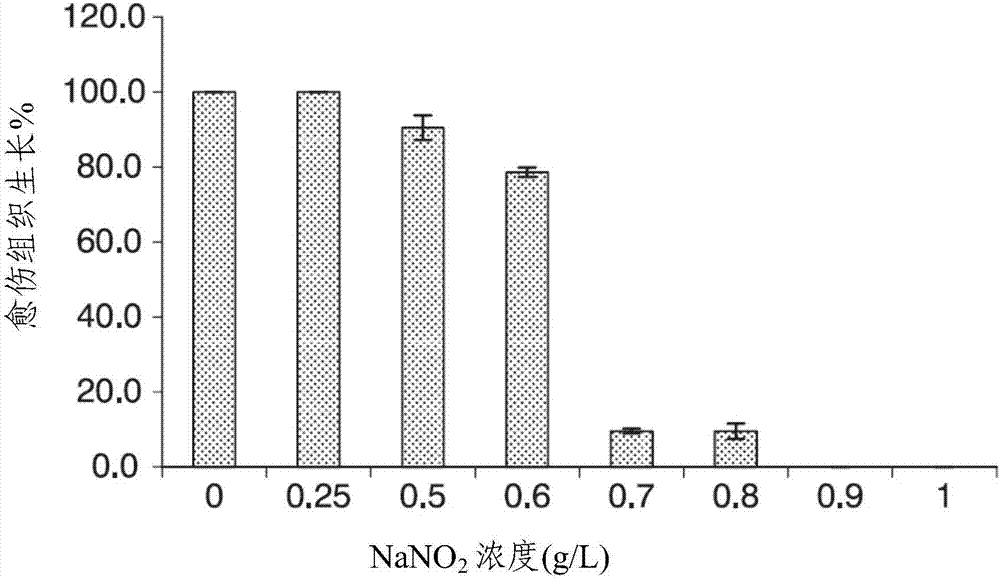Method of producing plastid transformants
A technology of transformants and plastids, applied in biochemical equipment and methods, chemical instruments and methods, using vectors to introduce foreign genetic materials, etc., can solve the problems of increasing the number of processes, not knowing the applicability of monocotyledonous plants, etc., and achieve excellent results The effect of screening efficiency
- Summary
- Abstract
- Description
- Claims
- Application Information
AI Technical Summary
Problems solved by technology
Method used
Image
Examples
Embodiment 1
[0103] Preparation of switchgrass regenerated strain
[0104] Mature seeds of switchgrass variety "Alamo" were dehusked by 60% (v / v) sulfate treatment, and seed fungicides were used for sterilization. The sterilized seeds were further surface sterilized by hypochlorous acid treatment and kept in callus induction medium (PVC medium: MS salts and vitamins, 30 g / L maltose, 22.6 μM 2,4-dichlorophenoxy Glycolic acid, 4.4μM BAP, 2.5mM MES, 3g / L gellan gum, pH 5.7). Seeds were grown at 28°C in the dark for several months. Then, the growing calli were sorted into independent strains for each derived seed. Strains in which compact callus growth expected to have regenerative capacity are selected and cultured. In addition, the compact calli of selected strains were kept in regeneration medium (PVS medium: MS salts and vitamins, 30 g / L maltose, 1.4 μM gibberellin A 3 , 2.5mM MES, 3g / L gellan gum, pH 5.7), cultured at 28°C under light for 4 weeks, and then confirmed the regeneration ...
Embodiment 2
[0135] Introduction of genes into rice plastids and selection of transformed cells
[0136] The PSR1 gene was introduced into the plastids of rice variety Nipponbare and rice variety Koshihikari, and transformants were selected using sodium nitrite. Specifically, proceed as follows. MS-NK medium (Nishimura et al., Nature Protocols, 2006, Vol.1, p. 2796-2802) used as a regeneration medium initially contained nitrate nitrogen. The wild-type rice variety Nipponbare has regeneration ability in MS-NK medium containing sodium nitrite at a concentration of 400 mg / L. However, wild-type rice variety Koshihikari did not regenerate even in MS-NK medium with weak nitrite reductase and no addition of sodium nitrite.
[0137] Calli from blastocysts cultured from mature rice seeds were induced and prepared using methods in the related art. The obtained calli of about 2 mm in diameter were arranged in a circle of about 35 mm in diameter in the central part of N6D medium (Nishimura et al., ...
PUM
 Login to View More
Login to View More Abstract
Description
Claims
Application Information
 Login to View More
Login to View More - R&D
- Intellectual Property
- Life Sciences
- Materials
- Tech Scout
- Unparalleled Data Quality
- Higher Quality Content
- 60% Fewer Hallucinations
Browse by: Latest US Patents, China's latest patents, Technical Efficacy Thesaurus, Application Domain, Technology Topic, Popular Technical Reports.
© 2025 PatSnap. All rights reserved.Legal|Privacy policy|Modern Slavery Act Transparency Statement|Sitemap|About US| Contact US: help@patsnap.com



